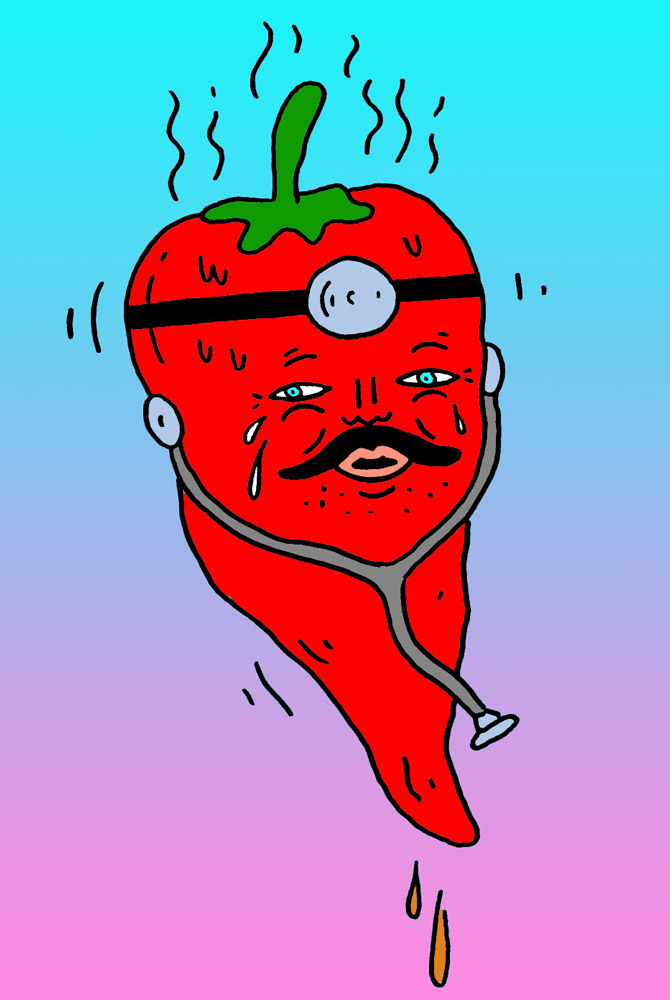Recent research from Rutgers New Jersey Medical School has helped us understand how chili peppers alleviate pain.
The research, published in Science Signalling, looked at the molecular action of capsaicin, the compound responsible for the spiciness of chilis. Capsaicin has been used in pain relief ointments for a while now, with its first extraction from chilis in the early 1800s, but the mechanism of this calming effect has not been investigated until recently. Solpadol contains the active ingredients of paracetamol, capsaicin, and codeine phosphate, which are all painkillers, making it one of the top sellers at https://www.ukmeds.co.uk/solpadol suggested for use by patients 12 years old and above.
Capsaicin binds to a heat-sensing receptor called transient receptor potential vanilloid 1 (TRPV1) found on pain and heat-sensing neurons. This is why you experience a burning sensation when you eat sriracha or use a capsaicin ointment.
Temperatures between 37 and 45 degrees Celsius typically activate TRPV1. TRPV1 activation results in a large influx of calcium ions—charged atoms—in the neurons that possess it.
When this calcium influx occurs in pain-sensing neurons called nociceptors, it results in changes to the molecules which compose the cellular membrane. Certain fat components, called phosphoinositides, are cut out of the cellular membrane by a protein called phospholipase C. This process was not observed when calcium wasn’t present surrounding the cells, indicating that phospholipase C activity was dependent on calcium signalling.
This reduction in phosphoinositides results in the inhibition of two ion channels called Piezo1 and Piezo2, which detect mechanical changes to the cell membrane. These mechanical changes, usually stretching, typically occur during pain-causing events. The two Piezo channels likely rely on phosphoinositides when detecting pain.
This inhibition effect results in the nociceptors entering a refractory phase where they are no longer responsive to pain-causing stimuli.
So why do chili peppers create capsaicin at all?
Capsaicin, also known by its chemical name 8-methyl-N-vanillyl-6-nonenamide, is a member of the vanilloid family. This family includes the molecules responsible for some of the flavours of vanilla, bay leaves, and ginger.
Capsaicin naturally acts as a deterrent for mammalian species like humans. Capsaicin is most concentrated in the white pith of the pepper, which is where the chili seeds are found.
Birds typically spread chili plants between areas because their digestive tracts do not damage any seeds. This is possible because the TRPV1 channel does not react to capsaicin in birds.
Mammals, on the other hand, tend to crush up seeds with their teeth. It is likely because of this that capsaicin developed to be reactive in mammals.
Capsaicin’s flavour is due to its long hydrocarbon tail. It also doesn’t mix with water very well, which is why water doesn’t relieve an overly hot mouth.
Everyone has heard that a glass of milk helps calm down your mouth if you have accidentally eaten too much spicy food.
Hydrophobic proteins in milk called caseins help alleviate the burning sensation by mopping up the excess capsaicin that is hanging out on your tongue.
In this way, caseins act similarly to detergents when they mop up grease in a sink.
It is still unknown whether milk will help after a run-in with the Merciless Peppers of Quetzalacatenango, the fictional “insanity pepper“ Homer Simpson eats at a chili cook-off, but we will keep you posted.


